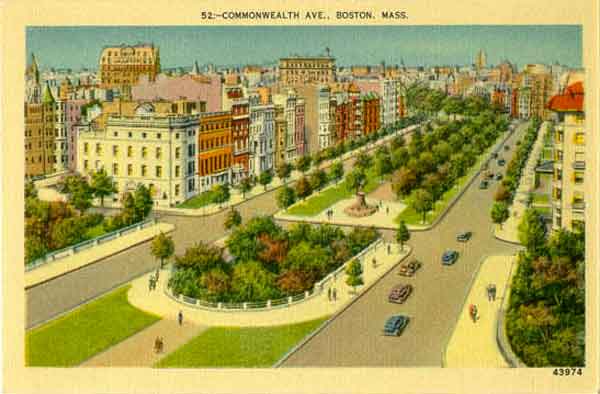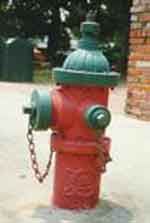

223 boston
See, saw sackaradown,
What is the way to Boston town? One foot up and one foot down; That is the way to Boston town. Boston town's changed to a city But I've no room to change my ditty -from Mother Goose's Melody, the original American Mother Goose compendium, printed in Boston, 1833 All praise is due to Boston, the first American city mature enough to intelligently undertake major projects of city-building, and the first to develop a distinctive sense of design. As the Massachusetts Puritans completed their long and perilous metamorphosis into secular Transcendentalists, the essential idealism survived. Not surprisingly, their obsession with morals set their capital's politics in a slightly higher tone than New York's. In the 1820's, Boston's first mayor spawned the model for an American stereotype: an ambitious and capable executive pushing through overdue reforms and a big program of public improvements, and finally being rejected by the voters when the pinch of taxes and plain weariness with reform began to tell. Josiah Quincy, the first great builder among America's mayors, took office the year after Boston town 'changed to a city'—incorporated itself—and he racked up six consecutive one-year terms from 1823 to 1829. As a public builder, Quincy provides the prototype for Robert Moses; he named himself to head all the important council committees, and ran everything that happened in Boston with a personal touch. He built his famous market, downtown Boston's chief tourist attraction today, over an old one that had become unsanitary and outgrown; its simple but elegant symmetrical plan was designed to highlight one of the city's pre-Revolutionary landmarks, Faneuil Hall. Quincy also drained the area around the old Town Dock, the original center of seaborn commerce, in order to move the city's sewer outlets farther offshore and to create new land for development. He reformed the police, the fire brigade and board of health; he exiled pigs from the city, and like many Protestant reformers he crusaded vigorously against whiskey and vice. That, and high taxes, finally did him in, but his six short years helped make Boston. Quincy's example inaugurated a great chapter in American city-building. The Bostonians built Boston the way the Dutch built the Netherlands. Starting with a city that had nowhere to grow except the 780 acres of the narrow Shawmut Peninsula, since 1803 they have added over 3000 more in landfill, filling in several coves, and expanding the thin neck of land that connected the old city to the mainland. Their beaverish zeal led to the creation of two new districts. The South End filled up in the 1840's and 50's with graceful elongated residential squares on the model of Louisburg Square on Beacon Hill, on a plan laid out not by developers but by the city engineers. However impressive, this was only a prelude to a truly pharaonic work, the Back Bay. There being no more Boston dirt to use for fill-the tops of Beacon Hill and other hills had already been shaved off and dumped into Shawmut's coves-the city dug it up in Needham, nine miles away. For 43 years, from 1857 to 1900, a trainload of earth arrived on the site every 45 minutes around the clock, seven days a week. Its plan, again the work of the city engineers, was a throwback to Renaissance design with a Boston twist, and the Back Bay became the new elite quarter by 1870. Boston's taste was sound, and through the century it was well served by exceptional architects, from Charles Bulfinch and Asher Benjamin in the 1800's to H. H. Richardson and McKim, Mead and White. Its designers, from the early city engineers to Frederick Law Olmsted, married beauty and utility with a sophistication far in advance of any other American city. They expanded their 'crooked but interesting' town with great care, and they built neighborhoods that have stood up to the disasters of the 20th century as well as any. |
|

|